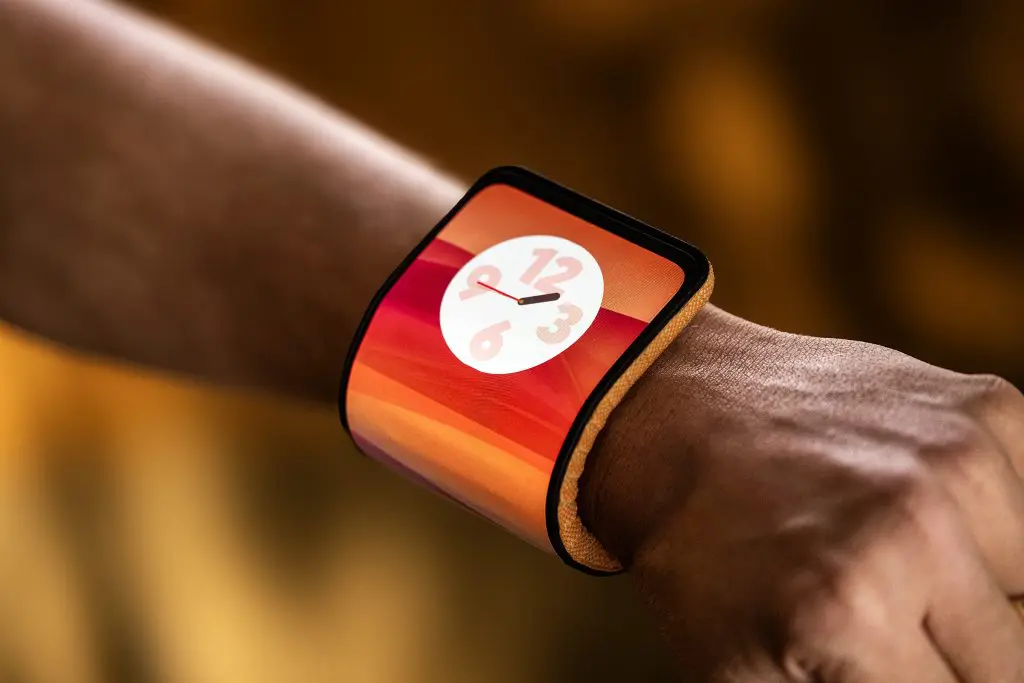At Lenovo Tech World 2023, Motorola made some announcements about AI concepts and one interesting announcement about an adaptive display that can bend and morph into different forms based on user needs. This flexible plastic OLED display can switch between a standard 6.9″ phone screen and a smaller 4.6″ display when folded. It can even wrap around the user’s wrist for smartwatch-like functionality.


Plastic OLED (pOLED) display technology has its origins in academic research from the 1980s, which explored plastic substrates as an alternative to rigid glass for OLEDs. Plastic offered the potential for thinner, lighter and more durable displays. The first commercial pOLED products emerged in the late 90s in devices like digital watches and car stereos, but were initially monochrome and low-resolution. In the 2000s, researchers developed flexible pOLEDs on thin plastics that could bend, paving the way for rollable and foldable displays. Around 2008, display makers transitioned pOLED to use active-matrix addressing, resulting in higher resolution AMOLED panels on plastic and enabling larger displays. The last decade has seen rapid scaling of pOLED production, with flexible plastic substrates enabling mainstream foldable smartphones, rollable TVs and curved automotive displays. Plastic OLEDs are now known for excellent image quality and bendability.
As we said earlier, Motorola also introduced generative AI features that allow greater personalization. Users can upload a photo of an outfit and the AI will generate unique wallpapers that match their style. The company provided a first look at MotoAI, a personal assistant that learns from user patterns over time. MotoAI processes data on-device for privacy and incorporates a knowledge base that adapts to individual preferences. Additional AI concepts included an enhanced document scanner to minimize wrinkles and shadows, and a text summarization tool to distill long texts into key takeaways.

